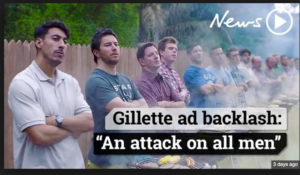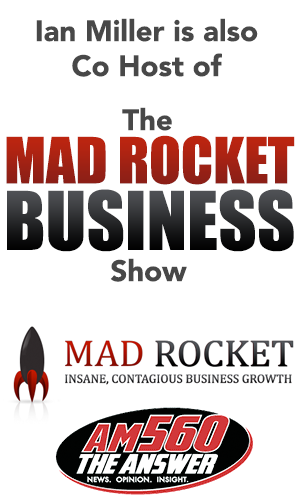Extreme Brand ing is alive and well.
ing is alive and well.
Nike jumped into the deep end of civil rights with Kaepernick’s Anthem kneeling. Now Gillette has followed suit with a not so subtle attack on ‘masculine toxicity.’
I get it! Gillette, like Nike, wants to make sure their global mega brand is relevant to the younger males who appear to be more sensitive to social purpose.
Nike played on their enduring, ‘Just Do It,’ campaign. Gillette is using their long time, ‘The Best a Man Can Get’ platform.
One can look at this from a business view and say bravo. Gillette’s viral buzz is on fire; brand re-awareness is rocketing and should continue so through the hyped Super Bowl season.
Nike’s sales were reportedly up after their campaign launched and although their effort turned off some loyal users, it has apparently worked for younger audiences. Time will tell. As one young friend said, ‘At least they had the courage to use their money to help make things better.”
I asked the same young person what they thought of the new Gillette campaign and he said,“Stupid. I don’t need some shaving company lecturing me on how I should be.”
Oops!
Of course this was just one person’s view, but it doesn’t take more than a Google minute to see that he was not alone. One report showed twice as many dislikes as likes.
Scanning through the comments, unlike Nike, which tended to be about social conscience for all, Gillette’s approach hits a more personal note.
Nike did not lecture the viewer on his or her role in civil liberty issues. They were celebrating Kaepernick’s individual right to ‘Just Do It.’ You can argue with the way he protested but at the same time you cannot argue with everyone’s rights to justice.
Gillette on the other hand may have made a bad mistake.
Did they take the right stand? Who are they talking to?
No question, the #MeToo movement has put a spotlight on sexual harassment, and yes, bullying has come to the fore today in really nasty ways including suicides and school shootings.
But, and this is a big ‘but’, not all males are bullies or sexual predators as this campaign seems to imply. These aren’t rampant diseases that every male indulges in. Maybe more was tolerated in the 50’s and 60’s as in the footage they showed, but not today.
In fact, data shows that females are just as likely to bully. Social media can be decidedly mean. A black eye is not good but it can heal. Being socially ostracized can hurt for a long time.
And BTW, on a purely personal note the phrase ‘boys will be boys’ is something I have heard just as often in my life from females and mothers. And why did the producer shoot men as though they were standing against a wall like in all the thousands of firing squad movies we’ve seen?
Gillette took a #MeToo movement against those males that sexually harassed to a platform indicting every male’s behavior and their duty to the next generation of males to boot!
Do males really need a shaving brand to lecture them on the bad behavior of a few and their supposed collective toxicity? I think not and unfortunately their attempt at what I call Extreme Branding will backfire for some time to come. After all switching shaving brands is not a big decision and Gillette is by no means unique. It is somewhat harder to move away from Nike products.
Hopefully they are going to evolve this campaign back to the original basis of the ‘The Best a Man’ campaign by celebrating the admirable aspects of manhood as opposed to taking on a gratuitous grandstanding attack on it.
Perhaps P&G should have taken note of Bud Light’s highly successful, ‘Dilly, Dilly!’ campaign where taking a stand ‘for the many and not the few’ actually works.
Or more so, look at their own excellent history of taking aging brands and reintroducing them to the young. I helped P&G do so in the successful re-launching both Old Spice and Head and Shoulders brands.
P&G’s Dawn Detergent’s, saving at-risk wildlife campaign is one of the more brilliant pieces of Extreme Branding I have seen. Their platform of strength and mildness was taken to an even higher level when they moved it into the ugly tragedy of oil spoils.
So what are the lessons here?
Extreme branding can certainly re-activate the presence and potential relevance of a brand to new generations but it can also backfire in profound ways.
Some tips:
1. Pick your poison carefully. It is fine for the brand to have an Extreme Branding platform but this is not about a strategy looking for a noisy cause. It is about authentic and relevant beliefs.
2. Don’t overstate your brand’s role. A brand can certainly educate, inform and at times be very persuasive on social issues. Chances are that many more eyeballs are going to see the Gillette advertising than may read the #MeToo news. So be sure you know what the role of the brand’s message is out there and make sure you are turning a lot more on than off, or you will be hurting the very cause you are trying to help.
3. Be Smart. Extreme Branding is a long-term strategy. Treat it as such and fight the battle to win overtime. Don’t just pop your head up, yell a little and then sit back down. Where Gillette goes next can well determine their fate in my mind at least.
What say you?


